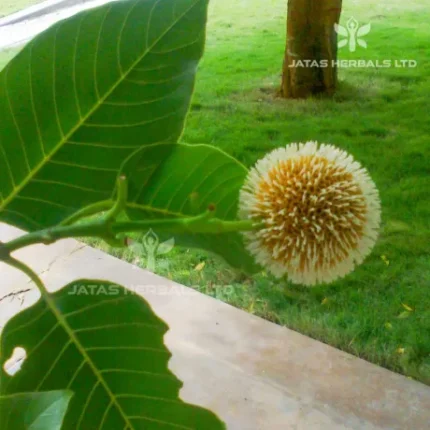Karkotaka is mentioned by brhat trayi as well as nighantu works is identified as M. dioica. Another plant by name karkotaki(C.S.Ka.4/2) or karkoti (A.H.Ut.30/18) is considered as vandhyakarkotaki and is identified as M.cochinchinensis Spreng). Bhavamisra also quoted karkotaki and vandhyakarkotaki.
Botancial Description – Momordica cochinchinensis (Lour.) Spreng., is a Southeast Asian fruit found throughout the region from Southern China to Northeastern Australia. It is also known as Baby Jackfruit, Spiny Bitter Gourd, Sweet Gourd, or Cochinchin Gourd. More recently, the fruit has begun to be marketed outside of Asia in the form of juice dietary supplementsbecause of its allegedly high phytonutrient content. It has been traditionally used as both food and medicine in the regions in which it grows. Gac grows on dioecious vines and is usually collected from fence climbers or from wild plants. The vines can be commonly seen growing on lattices at the entrances to rural homes or in gardens. It only fruits once a year, and is found seasonally in local markets. The fruit itself becomes a dark orange color upon ripening, and is typically round or oblong, maturing to a size of about 13 cm in length and 10 cm in diameter. Its exterior skin is covered in small spines while its dark red interior consists of clusters of fleshy pulp and seeds. – [ wikipedia]
Research – The seed of the Momordica cochinchinensis (Lour.) Spreng as a traditional Chinese medicine has been utilized in China for more than 1 200 years. It is traditionally used for the treatment of inflammatory swelling, scrofula, tinea, diarrhea as well as suppurative skin
infections such as sore, carbuncles, furuncles and boils in both humans and animals. In this study, an extract from Cochinchina ighantu seeds (ECMS) is evaluated for its adjuvant effect and safety. The results suggest that when co-administered with ECMS in Balb/c mice, ovalbumin (OVA, 10 µg) may induce significantly higher specific antibody production than OVA used alone (P < 0.05). Analysis of antibody isotypes indicates that the ECMS can promote the production of both IgG1 and IgG2a, but favor the IgG2a. Splenocyte proliferative responses to concanavalin A, lipopolysaccharides or OVA are significantly higher in mice immunized with OVA mixed with ECMS than immunized with OVA alone or mixed with aluminum hydroxide (P < 0.05). No local reactions and negative effects on the body weight gain occurred after the injection of OVA mixed with various amounts of ECMS in mice. Therefore, the ECMS is safe for injection and can be used as a potential vaccine adjuvant biasing the production of IgG2a in mice [Xiao Chenwen et al., 2006].






Reviews
There are no reviews yet.